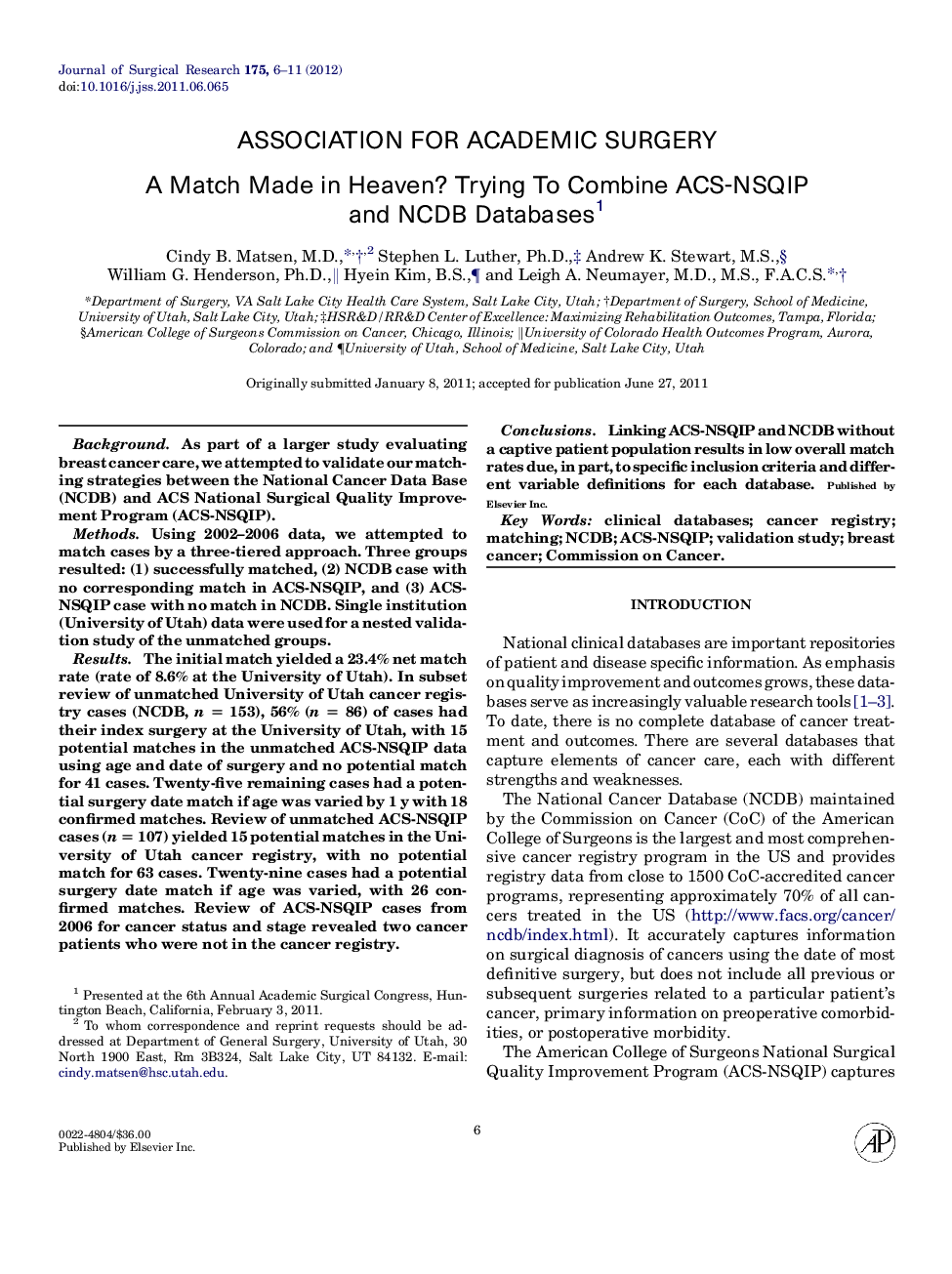| Article ID | Journal | Published Year | Pages | File Type |
|---|---|---|---|---|
| 4301313 | Journal of Surgical Research | 2012 | 6 Pages |
BackgroundAs part of a larger study evaluating breast cancer care, we attempted to validate our matching strategies between the National Cancer Data Base (NCDB) and ACS National Surgical Quality Improvement Program (ACS-NSQIP).MethodsUsing 2002–2006 data, we attempted to match cases by a three-tiered approach. Three groups resulted: (1) successfully matched, (2) NCDB case with no corresponding match in ACS-NSQIP, and (3) ACS-NSQIP case with no match in NCDB. Single institution (University of Utah) data were used for a nested validation study of the unmatched groups.ResultsThe initial match yielded a 23.4% net match rate (rate of 8.6% at the University of Utah). In subset review of unmatched University of Utah cancer registry cases (NCDB, n = 153), 56% (n = 86) of cases had their index surgery at the University of Utah, with 15 potential matches in the unmatched ACS-NSQIP data using age and date of surgery and no potential match for 41 cases. Twenty-five remaining cases had a potential surgery date match if age was varied by 1 y with 18 confirmed matches. Review of unmatched ACS-NSQIP cases (n = 107) yielded 15 potential matches in the University of Utah cancer registry, with no potential match for 63 cases. Twenty-nine cases had a potential surgery date match if age was varied, with 26 confirmed matches. Review of ACS-NSQIP cases from 2006 for cancer status and stage revealed two cancer patients who were not in the cancer registry.ConclusionsLinking ACS-NSQIP and NCDB without a captive patient population results in low overall match rates due, in part, to specific inclusion criteria and different variable definitions for each database.
